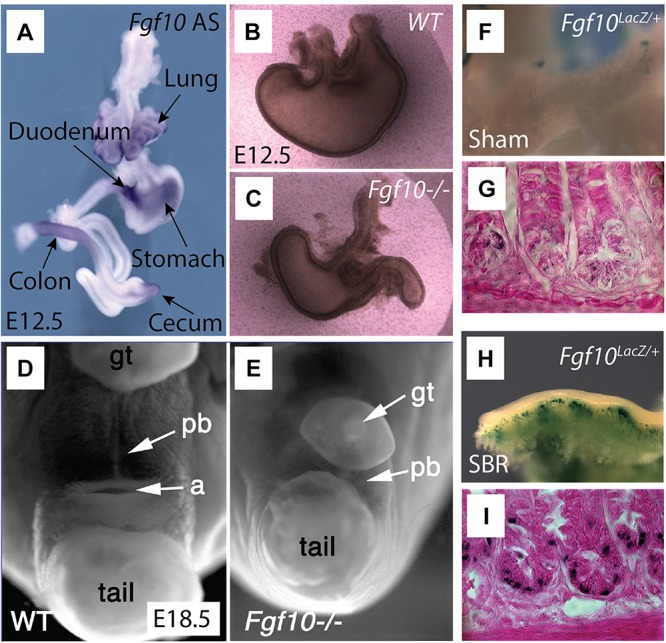FIGURE 2.

Overview of Fgf10 expression and associated Fgf10 KO malformations in the gastrointestinal tract. Adapted under CC-BY 4.0 license, from Burns et al. (2004); Fairbanks et al. (2004), Spencer-Dene et al. (2006), and Tai et al. (2009). (A) Whole mount in situ hybridization tracing the expression of Fgf10 (Antisense) in E12.5 gut. Fgf10 is expressed in the lung, duodenum (arrow points out to the pyloris located at the junction between stomach and duodenum), colon, stomach, as well as cecum. (B,C) Fgf10 KO embryos display stomach dysplasia (C) compared to wild type (WT) mouse (B). (D,E) Fgf10 KO embryos (E) display smaller perineal body (pb), with indistinguishable anus in E18.5 compared to the WT mouse (D). (F–I) A small bowel syndrome (SBR) was induced in Fgf10LacZ/+ mice. The Fgf10LacZ/+ mouse displayed increased β-galactosidase (a readout for Fgf10 expression) in the area of small intestine (H) and the crypts (I) of the ileum after small bowel resection (SBR) compared to the Sham group (F,G).
